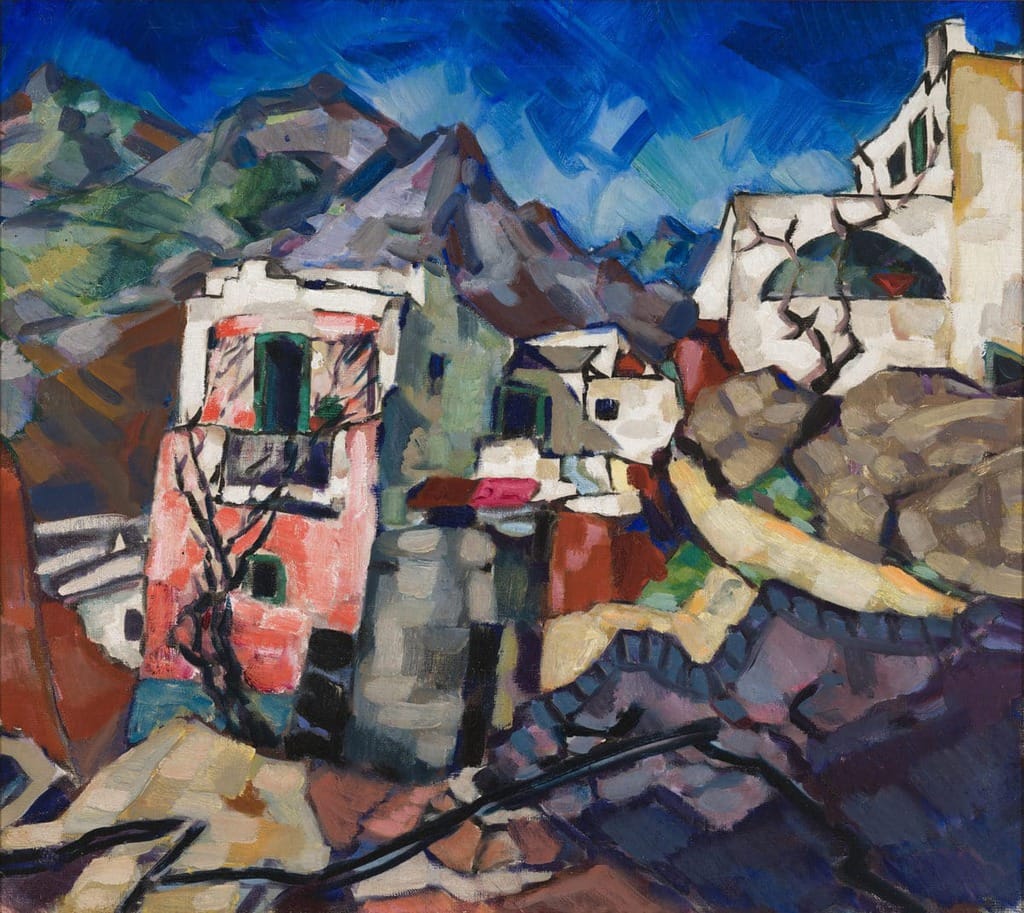
Konrad Mägi spent about a month on the island of Capri in the spring of 1922, yet he accumulated such a wealth of experiences there that he completed several dozen paintings on Capri and later in Tartu on the basis of those experiences. Mägi evidently got the idea of going to Capri from Ado Vabbe and Ants Laikmaa, who had been on the island previously already. Capri generated a feeling of elation in Mägi as well. He was happy on the island and worked fervently. While architectural motifs were previously absent from Mägi’s paintings (with the exception of a few churches and lighthouses), now Capri’s mysterious and romantic ruins came to the fore all at once. Similarly, Mägi now painted mountains for the first time, which he had also depicted a little bit in his Norwegian landscapes over ten years earlier.
The world appears to shift back to the moment of its birth in the paintings that Konrad Mägi completed on Capri. Mägi had searched throughout his oeuvre for contact with the moment when civilisation had not yet rationalised everything and put it in order. To that end, he painted deserted primeval landscapes in the Norwegian mountains, on the rocky shores of Saaremaa, or beneath the exploding sky of Pühajärve. He could have found such a primeval landscape of a different kind on Capri. Here we can suddenly also see anthropogenic objects. Buildings plod about the landscape like cripples on broken crutches, sagging lopsided and askew but nevertheless tenaciously remaining standing. We still do not see people bustling about. There are no people in the houses and their blackening windows do not betray the presence of anyone. Contorted forms and the most diverse colours, which have taken the landscape over for themselves, take the place of people. The rocky massifs towering in the background and the leafless early spring trees (Mägi was on Capri in March and April), which draw their primeval ornamentation on the background of the walls of the houses, also support the primeval nature and a certain wildness of the landscape. Although views of Capri are harmonious and beautiful in their romanticism and their search for complete concord, Mägi’s long-standing wish is being materialised to find in the world those places and moments when the world opens up to us not as a ready-made meal, but rather as a clumsy experiment with all its flaws and mistakes – yet at the same time with its complete honesty.